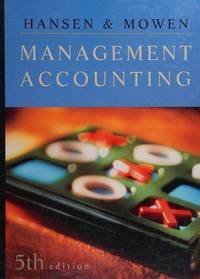Kenzie Sorensen, controller of Riqueza Company, has been helping an outside consulting group install an activity-based cost
Question:
Kenzie Sorensen, controller of Riqueza Company, has been helping an outside consulting group install an activity-based cost management system. This new accounting system is designed to support the company’s efforts to become more competitive (by creating a competitive advantage). For the past two weeks, she has been identifying activities, associating workers with activities, and assessing the time and resources consumed by individual activities. Now she and the consulting group have entered into the fourth phase of activity analysis: assessing value content. At this stage, Kenzie and the consultants also plan to identify drivers for assigning costs to cost objects. Furthermore, as a preliminary step to improving activity efficiency, they decided to identify potential root causes of activity costs. Kenzie’s assignment for today is to assess the value content of five activities, choose a suitable activity driver, and identify the possible root causes of the activities. Following are the five activities she is investigating along with possible activity drivers:
Activity Possible Activity Drivers Setting up equipment Setup time, number of setups Creating scrap* Pounds of scrap, number of defective units Welding subassemblies Welding hours, subassemblies welded Material handling Number of moves, distance moved Inspecting parts Hours of inspection, number of defective parts
*Scrap is defined as a bad product or subassembly that cannot be reworked and so must be discarded.
Kenzie ran a regression analysis for each potential activity driver, using the method of least squares, to estimate the variable- and fixed-cost components. In all five cases, costs were highly correlated with the potential drivers. Thus, all drivers appeared to be good candidates for assigning costs to products. The company plans to reward production managers for reducing product costs. lop4 Required:
1. For each activity, assess the value content and classify each activity as valueadded or nonvalue-added (justify the classification). Identify some possible root causes of each activity and describe how this knowledge can be used to improve activity management. For purposes of discussion, assume that the value-added activities are not performed with perfect efficiency.
2. Describe the behavior that each activity driver will encourage, and evaluate the suitability of that behavior for the company’s objective of creating a sustainable competitive advantage.
Step by Step Answer:






